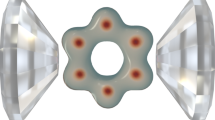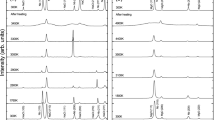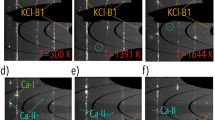Abstract
WRITING in the current number of the Proceedings of the Royal Society, Prof. A. O. Rankine concludes from determinations of the viscosity of cyanogen gas that the cyanogen molecule “behaves in collision like a hard body formed by two overlapping hard spheres, each of which has the kinetic properties of a nitrogen molecule.” He gives as the distance between the centres of these overlapping spheres 2.3 × 10−5 cm. Prof. Rankine also remarks: “It is significant that the crystals of potassium cyanide and those of the potassium halides are usually stated to be isc-morphous, and that, in addition, we find that KBr and KCN have nearly identical molecular volumes—43.1 and 42.8 respectively. Thus if CN replaces Br there is no appreciable change in volume, and we may conclude, tentatively, that the cyanogen radicle and the bromine atom have the same size.”
This is a preview of subscription content, access via your institution
Access options
Subscribe to this journal
Receive 51 print issues and online access
$199.00 per year
only $3.90 per issue
Buy this article
- Purchase on Springer Link
- Instant access to full article PDF
Prices may be subject to local taxes which are calculated during checkout
Similar content being viewed by others
Author information
Authors and Affiliations
Rights and permissions
About this article
Cite this article
COOPER, P. X-ray Structure of Potassium Cyanide. Nature 107, 745–746 (1921). https://doi.org/10.1038/107745c0
Issue Date:
DOI: https://doi.org/10.1038/107745c0
Comments
By submitting a comment you agree to abide by our Terms and Community Guidelines. If you find something abusive or that does not comply with our terms or guidelines please flag it as inappropriate.



